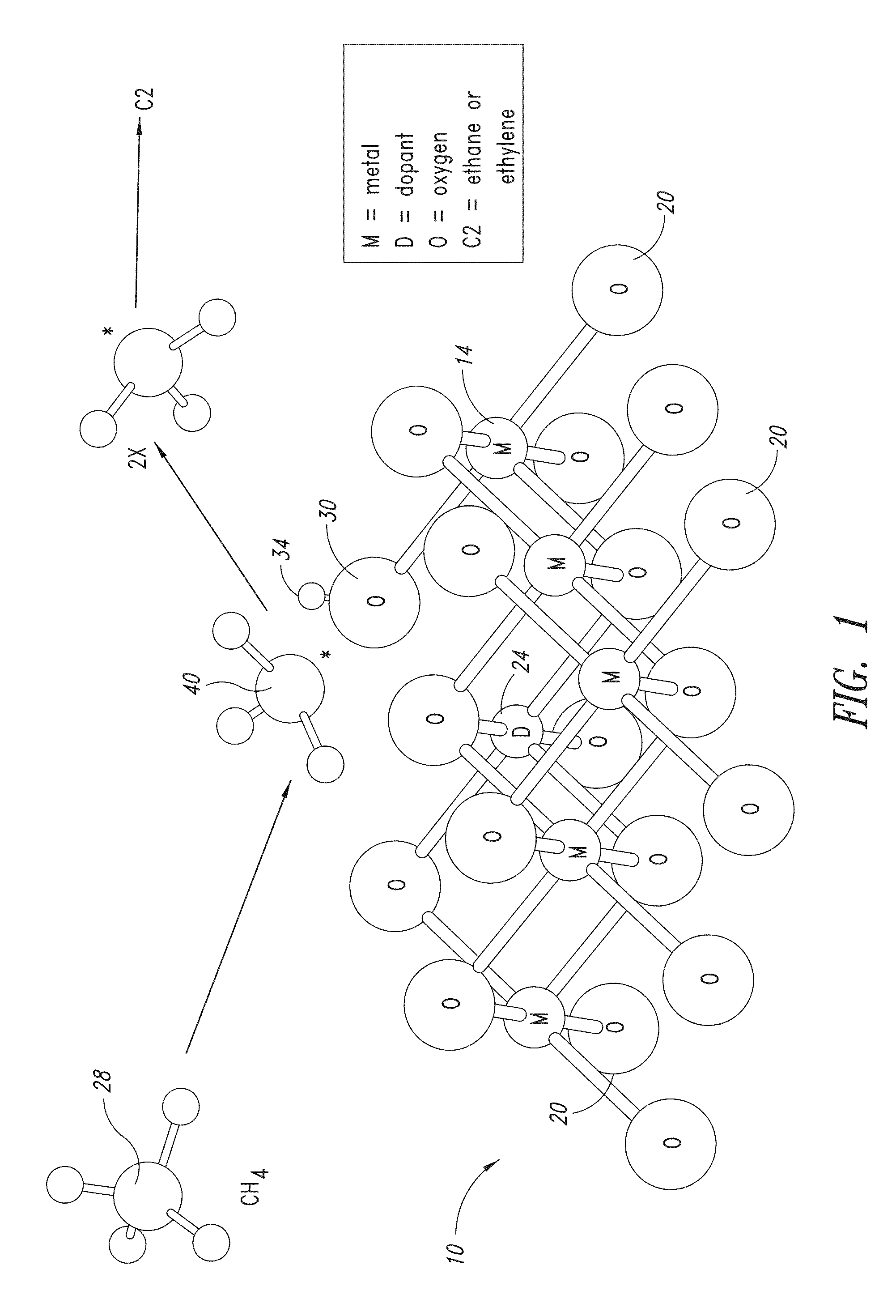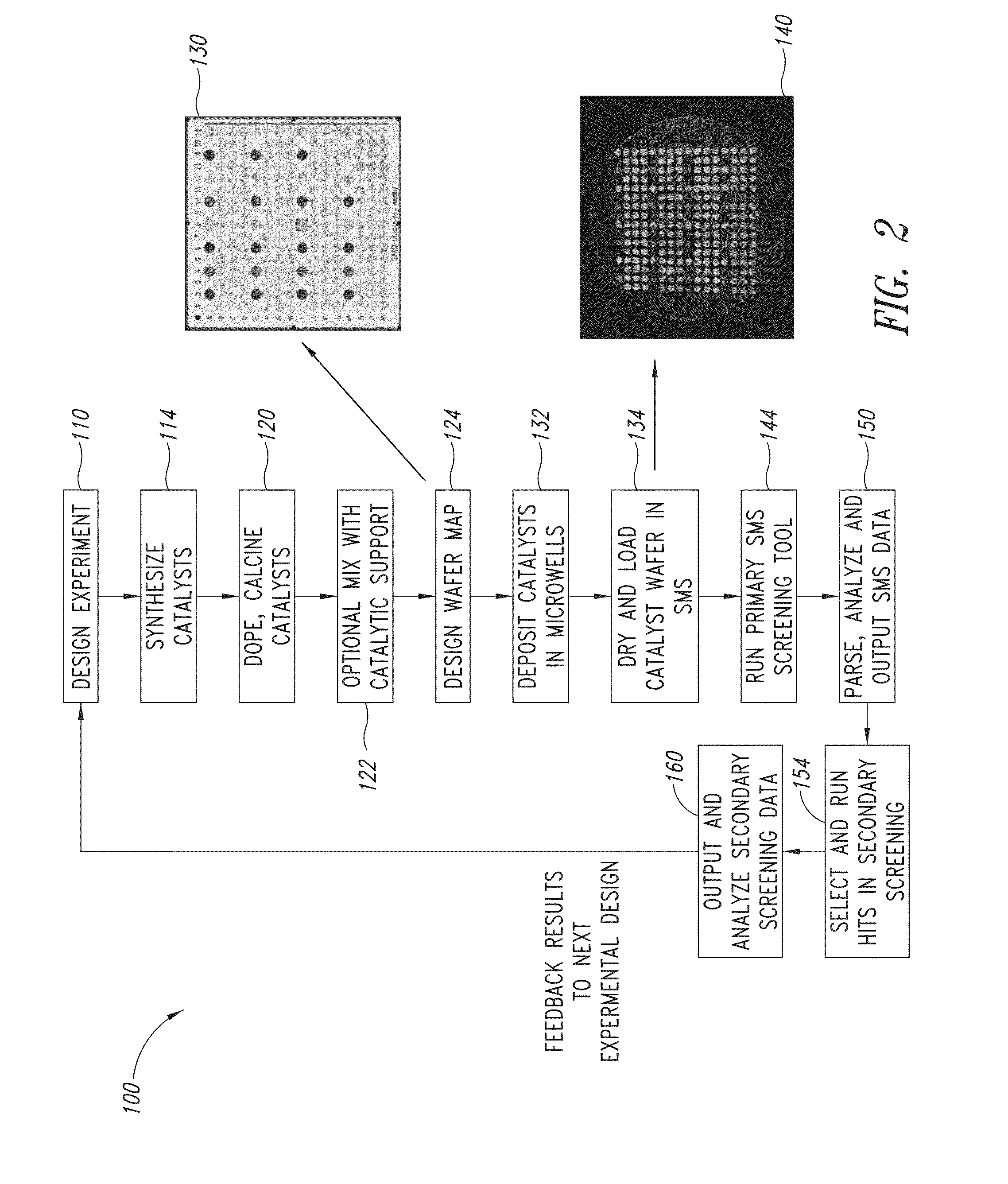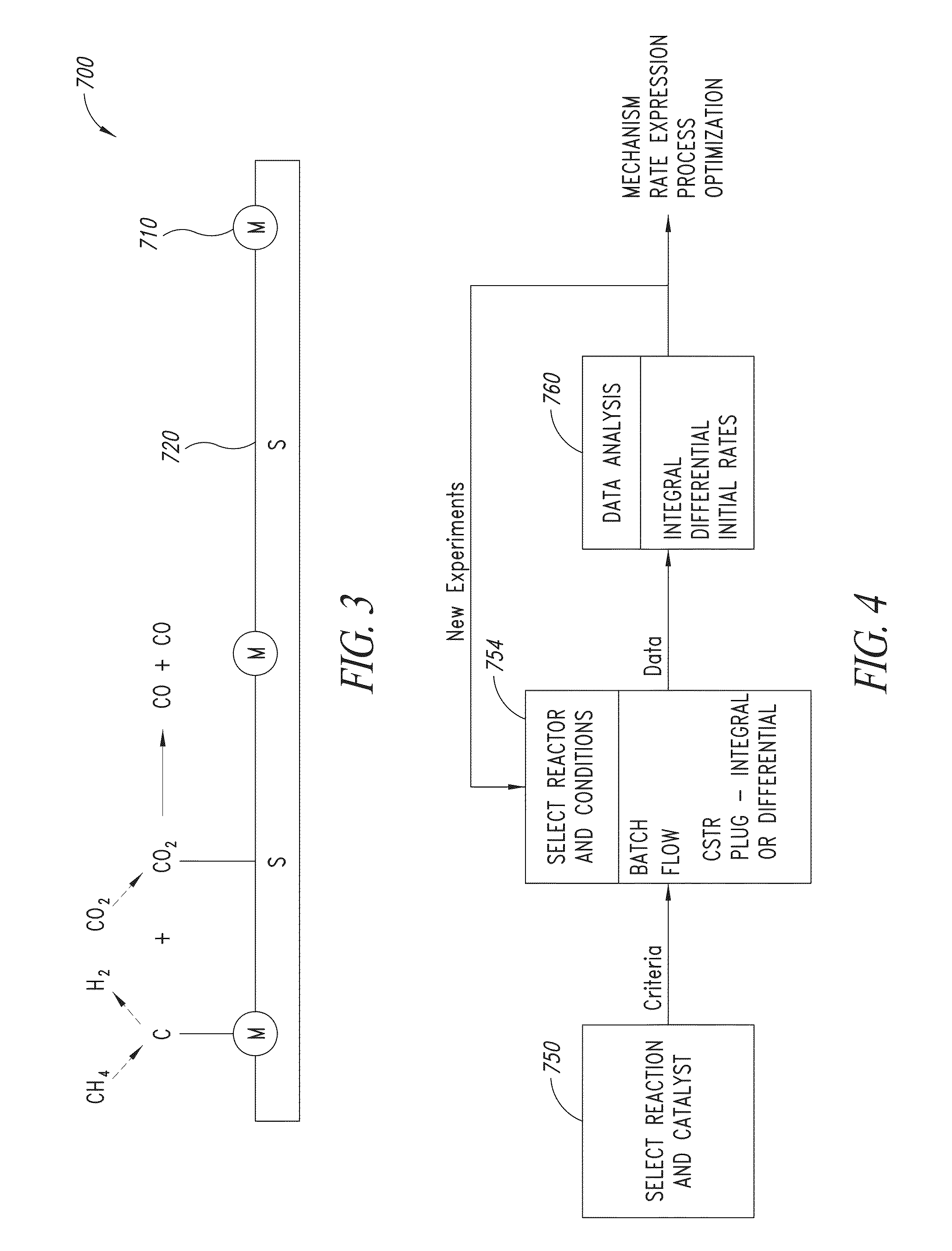Heterogeneous catalysts
a catalyst and heterogeneous technology, applied in the field of heterogeneous catalysts, can solve the problems of reducing the yield of undesired side products, affecting the efficiency of catalysts, and often limiting the rate of reaction reaction, so as to achieve the effect of improving catalytic activity
- Summary
- Abstract
- Description
- Claims
- Application Information
AI Technical Summary
Benefits of technology
Problems solved by technology
Method used
Image
Examples
example 1
Preparation of Exemplary Bulk Catalysts
[0438]Equimolar aqueous solutions of strontium nitrate, neodymium nitrate, and erbium nitrate are prepared. Aliquots of each solution are mixed together to prepare a desired formulation of ErxNdySrz where x, y, z represent mole fractions of total metal content in moles. Representative examples of formulations are: Er50Nd30Sr20, Er52Nd45Sr05, Er75Nd22Sr03, and the like. A solution of citric acid is added to the metal salt mixture so that citric acid mole / metal mole ratio is 3:1. Ethylene glycol is then added to the citric acid / metal salt solution so that the ethylene glycol / citric acid mole ratio is 1:1. The solution is stirred at room temperature for 1 h. The solution is then placed in a 130° C. oven for 15 h to remove water and to promote resin formation. After 15 h, a hard dark resin is observed. The resin is placed in a furnace and heated to 500° C. for 8 h. The remaining material is heated to 650° C. for 2 h to yield the desired product.
[04...
example 2
Preparation of Exemplary Doped Catalyst
[0441]3.0 g of Er2O3 bulk from Alfa Chemicals is slurried in a solution formed by dissolving 0.378 g of Sr(NO3)2 in about 20 ml of DI water. The slurry is stirred at room temperature for about 30 minutes to ensure that the Sr(NO3)2 dissolves. The slurry is then moved to an evaporating dish and placed into an oven at 100-140° C. for 2-3 hours to ensure dryness. The solids are then calcined in a furnace by ramping up to 350° C. at 5° C. / min and holding for 2 hours and then ramping again at the same rate to 700° C. and holding for 4 hours. It is then cooled to room temperature, ground and sieved to a particle size range of 180 μm to 250 μm.
[0442]Catalysts comprising different dopants are prepared according to the above general procedure.
example 3
Preparation of Exemplary Nanowires Catalysts
[0443]Phage is prepared as described in U.S. Pub. No. 2012 / 004124623, the full disclosure of which is incorporated herein by reference. 23 ml of 2.5 e12 pfu solution of phages is mixed in a 40 ml glass bottle with 0.046 ml of 0.1 M ErCl3 aqueous solution and left incubating for 16 h. After this incubation period, a slow multistep addition is conducted with 1.15 ml of 0.05 M ErCl3 solution and 1.84 ml of 0.3 M NH4OH. This addition is conducted in six hours and twenty steps. The reaction mixture is left stirring another 2 h at room temperature. After that time the suspension is centrifuged in order to separate the solid phase from the liquid phase. The precipitated material is then resuspended in 5 ml of water and centrifuged in order to further remove un-reacted species. A final wash is conducted with 2 ml ethanol. The gel-like product remaining is then dried for 30 minutes at 110° C. in a vacuum oven.
[0444]The dried product is then calcine...
PUM
| Property | Measurement | Unit |
|---|---|---|
| temperature | aaaaa | aaaaa |
| temperatures | aaaaa | aaaaa |
| temperatures | aaaaa | aaaaa |
Abstract
Description
Claims
Application Information
 Login to View More
Login to View More - R&D
- Intellectual Property
- Life Sciences
- Materials
- Tech Scout
- Unparalleled Data Quality
- Higher Quality Content
- 60% Fewer Hallucinations
Browse by: Latest US Patents, China's latest patents, Technical Efficacy Thesaurus, Application Domain, Technology Topic, Popular Technical Reports.
© 2025 PatSnap. All rights reserved.Legal|Privacy policy|Modern Slavery Act Transparency Statement|Sitemap|About US| Contact US: help@patsnap.com



